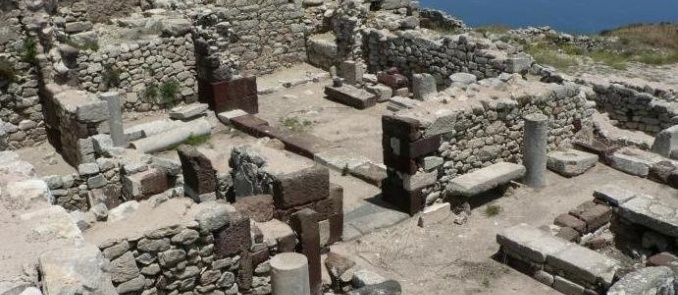Akrotiri archeological site: Just a glimpse of Santorini’s history
Packing our bags to Santorini island became even more appealing as of April 2012, when the archeological site of Akrotiri re opened to the public after having remained closed for many years, thus expected to attract thousands of visitors.
In 2005, the protective shelter over the site collapsed resulting to closure mainly for security reasons.
Today, the newly constructed bioclimatic shelter, enables visitors to admire the excavations that brought a whole civilization back to light... A civilization that was buried under thick ash for many centuries.
Thus, heading towards the southern part of the island we come across the area of Akrotiri...a site which will instantly make you forget that you are located in one of the most tourist places in the world.
The area was inhabited in the late phase of the Neolithic Era. It constituted an important port of the Mediterranean and held a great role as far as marine transportations and the overall cultural identity of the Aegean Sea is concerned.
What happened back then and Akrotiri “vanished” from the face of the earth for so many centuries?
It was towards the end of 2nd millennium B.C. and the strong wind was holding ships at the port. Suddenly, a massive cloud covered the sky that turned day into night. The tidal waves washed away the coastal areas and - within just minutes - the most significant civilization of the Eastern Mediterranean vanished from the eruption of the volcano in Santorini island.
Nowadays, when we walk on Telchinon Street - the main street of the ancient site – we notice that even back then houses were built on two or three levels with materials such as chipped stone and shale. Floors were interconnected with wooden or stone staircases, some of which are still preserved in excellent condition. Unfortunately the elaborate wall paintings were not saved, but what you will find amazing is the advanced sewage system and its network spanning across the entire settlement...A definite sign that the people who lived there were cosmopolitan.
In all of the houses the archaeologists found great vases which were used for storing barley, corned foods and fish. The residents of Akrotiri had an advanced sense of the culinary arts. They really liked pomegranates, figs and almonds and they loved fish, sea-urchins, sea limpets and goat meat.
Come and see the rest...Don’t miss this visit !



